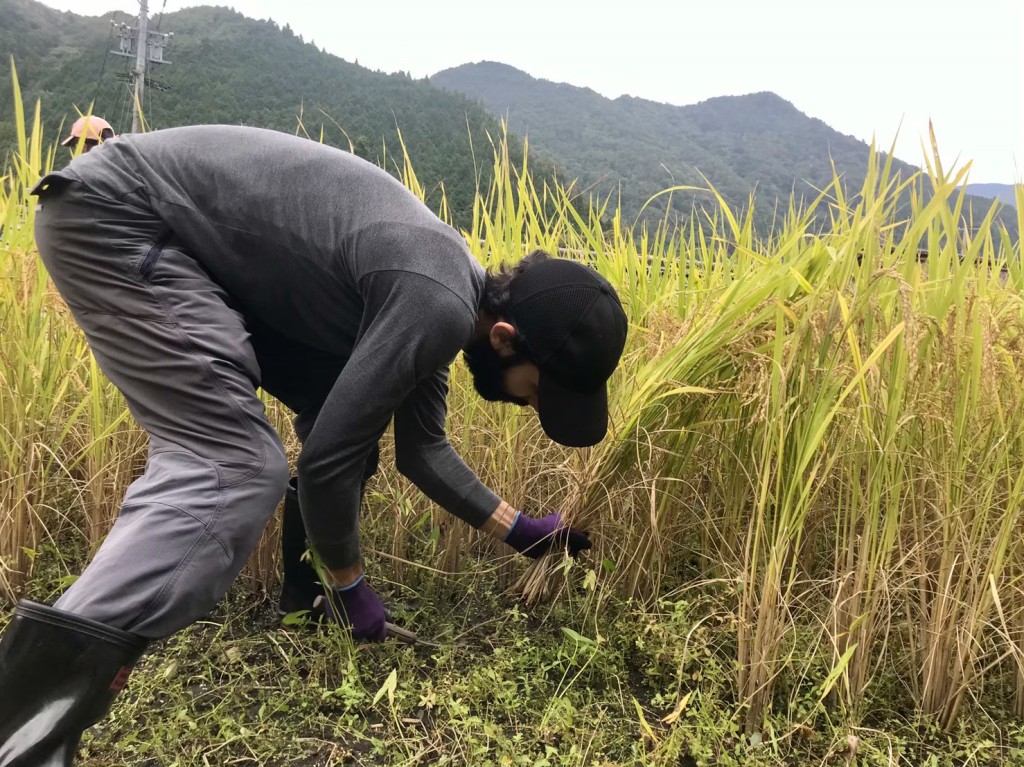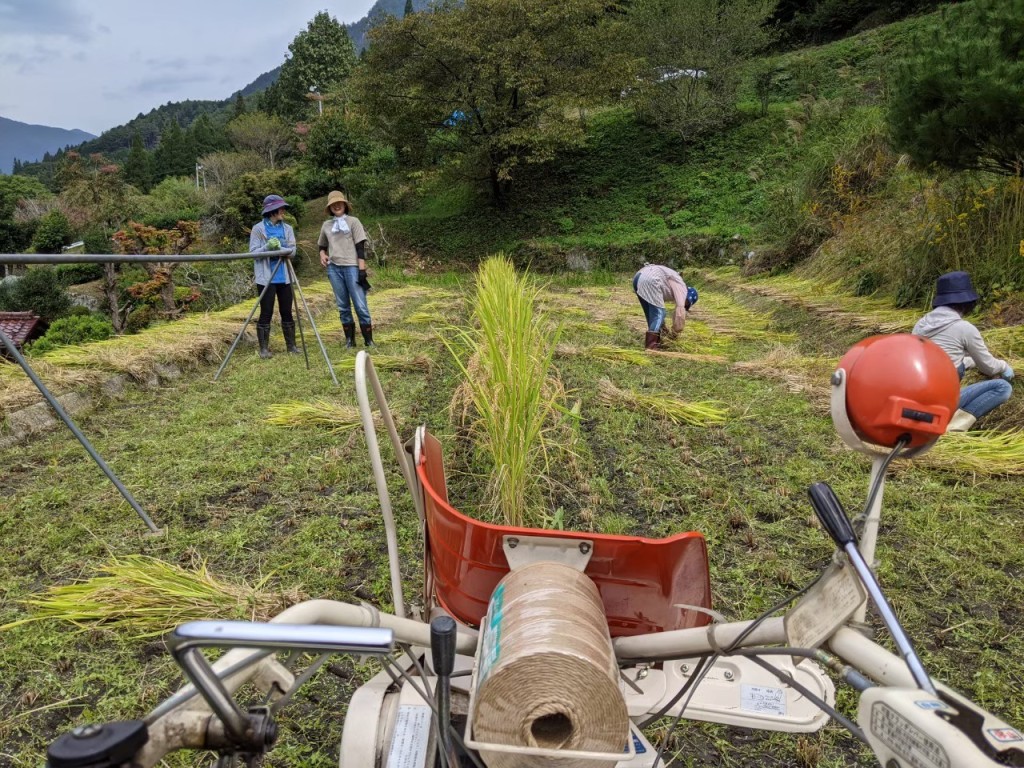It’s rice-planting season here in the Kiso valley. And you know what that means? That’s right – ten thousand frogs croaking just outside my bedroom window literally all night. But while I’ve long gotten used to sound (and now actually find it kind of relaxing), this time around it’s only serving to remind me that rainy season is almost here. And I am not looking forward to another rainy season trapped here in this mouldy coffin of a house.
My wife and I are actually just in the middle of signing a contract to buy a new house nearby in Nagiso (the three-page contract requiring a total of 36 separate inkan seals between us), but it looks like the move itself will end up happening later in the summer. So we’re hard at work making preparations for yet another war on mould – one that, this time, we intend to win (or at least grind into a Stalingrad-esque stalemate).
However, I’m sure no one wants to turn last year’s self-pitying mould-based blog post into an annual event, so let’s focus on rice instead. The recent sights and sounds of people planting rice has brought back memories of October 2020, when we tried our hand at helping our neighbours harvest their rice. Which is something I meant to write about at the time, but I must have ended up getting distracted by work, or responsibilities, or some kind of extremely small frog.

Anyway, here are some thoughts (and some photos) on our experience getting back to nature, and bonding with seven or eight of our extremely friendly neighbours through the magic of communal rice harvesting:
– – –
There are two ways to harvest rice. The first, traditional way, involves shuffling down each row with a sickle, cutting off the bunches off at the stem, before using some old rice straw to tie them up into bundles. The second, modern way, is to push a kind of tiny tractor in front of you, and feel like a big man as it does literally all the work (including automatically tying up the bundles).
Since this was as much a social event as a practical rice harvesting endeavor (we’d all long gone stir-crazy from Covid isolation, and this was a good excuse for some much-needed outdoor socialising), we tried out both methods just for the fun of it.

And it really was kind of fun – breathing in the fresh air, shuffling down row after row of giant, golden tufts of rice, and slowly getting better and better at tying up the bundles.
However, if you know me you’ll know full well that there is no leisurely activity I cannot at least partially taint by turning it into a needlessly intense competition with myself. And so I set about seeing how quickly I could harvest an entire row, or how efficiently I could tie up each bundle, while occasionally taking sneaking looks over my shoulder – all the better to compare my efforts with those enjoying themselves around me.

As a side note: the fields we harvested were planted not with regular rice, but with mochigome (i.e. the kind of sticky, glutinous rice used for making mochi (i.e. rice cakes eaten as snacks, soups, desserts, or wrapped in age (i.e. thinly-sliced and deep-fried tofu))).
When I first moved to Japan I, like many newcomers, couldn’t really understand the appeal of mochi, or traditional Japanese sweets like sweet bean paste. To me they tasted either entirely bland (mochi), or overwhelming injections of sugar (sweet bean paste). But over the years I’ve really come to develop a taste for them. And, like many foreigners who stay in Japan for a long time, I secretly think this makes me better and more Japanese than other foreigners.
Mochi can be eaten in all kinds of different ways, and even in the west it’s gained a bit of popularity in recent years in the form of mochi ice cream. My ultimate mochi recommendations, though, are: (3) hoba-maki (a delicious traditional sweet eaten all the time in Nagiso, made of mochi wrapped around sweet bean paste), (2) wrapped in age and eaten in a spicy winter hot pot (expect a blog post next winter raving about how much I love Japanese hot pots), and (3) dried mochi dry-fried in a pan, then coated in soy sauce and butter (a simple, absolutely life-endingly delicious snack).

Eventually, we gave up on manual labour and decided it was time to bring out the big guns: the diesel-powered, hand-cranked rice destroying machine. I quickly learned to operate this big machine thing, and then had the time of my life pushing it around like some kind of person who knows what they’re doing.
After working up a bit more of a sweat, we all took a snack break, setting up some crates by the field to serve as a makeshift table. It was great being able to properly socialise with our neighbours, as moving here just before a global pandemic wasn’t the best thing for making new friends and becoming part of the community.
Everyone was very nice, and I made friends with a dog:


After our break, it was back to work, finishing off the last of the harvesting:


After cutting the bundles, but before lining them up on the drying racks, we spread them out and placed them upside down on the ground, for reasons I was informed of but then later forgot. I’m sure it was very important.
One thing I really noticed at this stage was just how many insects there were in that field. Hundreds upon hundreds of tiny inago (rice grasshoppers) desperately jumping back and forth from the harvested stalks of rice, like I had just ended their world. I felt kind of bad for taking away their home/ending their world, but the call of fried mochi and soy sauce was just too strong to resist.

Then finally, after all the rice was cut and bundled up, it was time to hang them to dry in the sun. Traditionally this is done on bamboo poles, but most people nowadays use metal ones for reasons of strength and durability.
It was amazing just how many bundles of rice you could fit on the racks. Whenever I thought we had run out of space, someone came along and stuffed a dozen more on. By the end, I thought the whole thing was going to either collapse, or somehow comically explode due to the overwhelming weight. But somehow everything stayed upright and un-exploded, and we had nothing left to do other than stand back and admire a job well done.

And that was our day harvesting rice. The bundles of rice stayed out in the field to dry in the sun for several days. And while some years see crops being ruined by endless unseasonal rain, this time the skies stayed mercifully clear.
We weren’t involved in the next step of the rice-harvesting process (and this year I’d like to take part in that too, or at least see how it all works), but a few weeks later we did receive a warm thank you, and a nice bag of dried mochi – just in time for those winter hot pots on those freezing Kiso valley winter nights.
So here’s looking forward to another bumper harvest this year, and another winter full of cozy nights eating hot pots and getting absolutely smashed on local sake. Hopefully not just by ourselves this time, but together with friends and neighbours – sharing the pleasure with those around us in a (kind of) post-Covid world.
And hopefully in a new house, for god’s sake.

